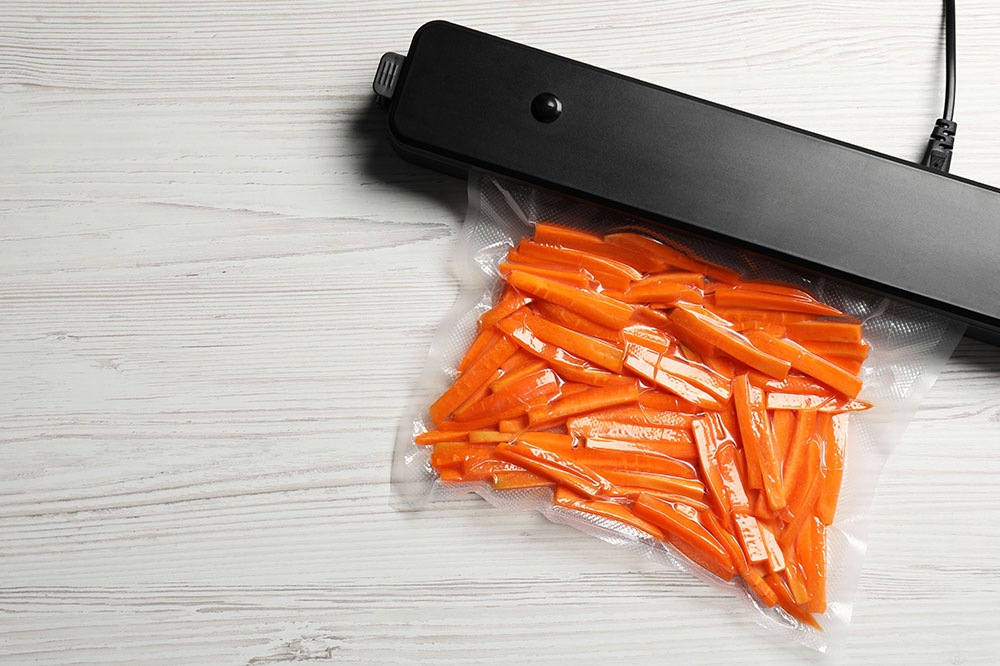6 tips for using food vacuum sealers

Vacuum sealing helps ensure that food products, whether cooked or uncooked, stay fresh for longer. Vacuum sealers can also be used to store leftovers, so one does not have to throw away large portions of unfinished food. When used right, food vacuum sealers can help reduce food wastage and spoilage. Further, they can help preserve food taste and texture. However, here are a few tips to follow while using food vacuum sealers:
1. Let the food cool down first
The food about to be vacuum sealed should be completely cooled down before one starts the sealing process. As, if hot or warm food is sealed in a vacuum bag, it can accumulate a lot of moisture. If the food is placed in the refrigerator, it can develop freezer burns—dehydration and oxidation of food that may cause a change in the taste of the food.
2. Leave some room in the bag
One may be tempted to fill up the entire vacuum bag with food to avoid using another bag. However, overfilling a vacuum bag is not a good idea, as it may need a little space to be completely sealed. A little room in the bag allows the air to escape when using the vacuum sealer. Further, some food vacuum sealers need more space at the top of the bag than others. So, one should avoid stuffing the vacuum bag.
3. Wipe fluids near the seal
If one is planning on vacuum sealing a particularly juicy food, then one should be cautious about excessive fluids at the top of the vacuum bag. Fluids around the top can make it difficult to secure the seal. This then makes the sealer unable to get rid of all of the air in the bag. So, after adding food to the bag, one should carefully wipe the top portion of the bag to let the sealer work with ease. Even while adding liquids, one can simply get rid of excess fluid near the seal.
4. Ensure good food hygiene
When one is vacuum sealing food, the objective is not to let any bacteria and excess air stay inside the bag. Unclean hands can keep one from successfully sealing food. So, one should always wash their hands before using a vacuum sealer. Alternatively, one should wear gloves before vacuum-sealing food. While raw or uncooked vacuum-sealed food will be cooked later and free from harmful bacteria, cooked vacuum-sealed food is prone to contamination. So, when storing leftovers and other cooked meals, one should be even more cautious about hygiene. Further, such food, if not heated enough before consumption, can be harmful to health. This is why maintaining good hygiene while storing food is crucial.
5. Inspect the bag after sealing
One should always inspect the seal and look for unwanted creases or gaps after sealing foods. Sometimes, one may need to fold the vacuum bag in order to make it fit in the freezer or portion meals. However, the way the bag is folded can influence the effectiveness of the seal. One should ensure the folds are not sharp to avoid any tears. This is also why one should be careful while sealing sharp-edged foods, like chips or meats (with bones). One should generally avoid exerting excessive pressure on the bag to prevent reducing the effectiveness of the seal.
6. Let the food thaw before use
Thawing is a crucial step before cooking or reheating foods that have been vacuum-sealed. Once removed from the freezer, the food will take some time to come to a normal temperature. One should be patient and let the food thaw before cooking it. This is especially important for vacuum-sealed meats. If one thaws the meat before use, they can ensure the meat cooks faster. This can also help one avoid overcooking the meat, which is likely when trying to cook unthawed meat. Further, thawing vacuum-sealed food helps reduce the risk of burning the food.
One can find a wide variety of vacuum sealers as well as vacuum bags. One should do some research to find the right kind of bags and sealer for their home, based on their food storage needs. Assessing the available storage space, budget, and desired frequency of vacuum-sealing foods can help one choose the right product.

